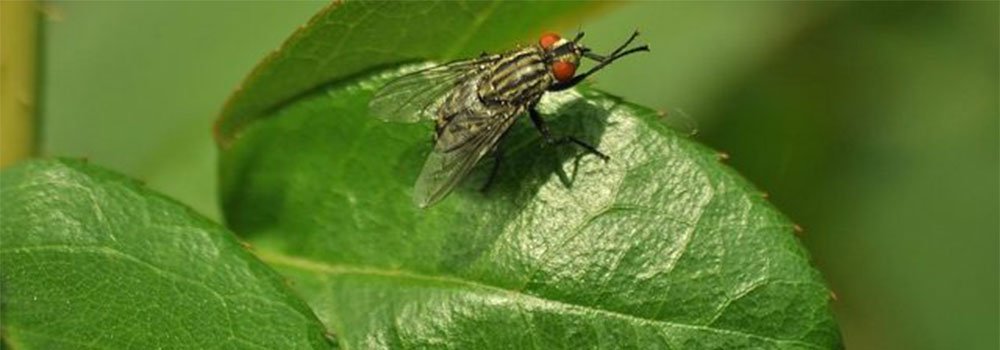Have you seen an expansion in flies amassing around your outdoor plants? Understanding the purposes for this peculiarity is essential in tending to and forestalling such pervasions.
Investigating the way of behaving of these insects and their fascination with outdoor plant life discloses fundamental experiences into keeping a solid nursery or scene.
The presence of flies on your plants can be disturbing, possibly demonstrating fundamental issues with plant wellbeing or environmental conditions. So, continue reading before you look for why are flies all over my outdoor plants.
Understanding Fly Behavior

Flies are assorted in species and conduct, and appreciating their activities helps with handling pervasions around outdoor plants. House flies, drawn to rotting matter, flourish in conditions wealthy in natural waste.
Natural product flies, looking for overripe leafy foods substances, as often as possible accumulate around plants. Organism gnats, attracted to sodden soils and deteriorating plant material, add to the fly populace.
Knowing their appreciation for rotting natural matter or moistness offers experiences into destroying reproducing locales and diminishing their commonness on outdoor plant life.
Reasons For Flies On Outdoor Plants

The fascination of flies to outdoor plants frequently establishes itself in the accessibility of breaking down natural matter. Spoiling leaves, fallen natural products, or rotting plant trash act as focal points for flies looking for rearing destinations and sustenance.
These regions become ideal spots for egg-laying and scrounging, welcoming a flourishing fly populace. Moreover, overwatering or overabundance dampness in soil establishes a cordial climate for flies, attracting them to the moistness helpful for reproducing.
By tending to these principal factors, grounds-keepers can essentially abridge fly invasions on their outdoor plants.
Role Of Plants In Attracting Flies
Plants assume a critical part in drawing in flies through different systems and variations. Some plant species have advanced to deliver aromas or produce substances that explicitly tempt flies.
Blossoms discharge fragrant mixtures that go about as a bait, drawing in flies to support fertilization via conveying dust starting with one bloom then onto the next.
Moreover, certain plants make microhabitats helpful for the improvement of fly hatchlings, laying out a harmonious connection between the plants and the flies.
By knowing why is my yard full of flies and understanding which plants usually draw in flies, grounds-keepers can expect possible pervasions. And find proactive ways to control and oversee fly populaces in outdoor settings.
Natural Remedies To Control Fly Infestations
Regular cures offer successful means to prevent and control fly invasions on outdoor plants without turning to cruel synthetic compounds. Rejuvenating balms like peppermint, eucalyptus, or lavender act as strong anti-agents, upsetting flies’ tangible receptors and deflecting their presence close to plants.
Spices like basil, mint, or rosemary, when established close to helpless regions, transmit fragrances that repulse flies. Natively constructed showers joining vinegar, rejuvenating balms, or garlic go about as normal anti-agents without hurting plants or the climate.
Utilizing these natural techniques controls fly populaces as well as advances a more secure and eco-accommodating way to deal with overseeing pests in outdoor spaces, guaranteeing a better climate for plants and useful insects.
Best Practices For Managing Fly Infestations
Carrying out powerful practices is significant in overseeing fly pervasions around outdoor plants while guaranteeing a sound nursery climate. Satisfactory watering practices, staying away from overhydration and guaranteeing appropriate waste, lessen inordinate dampness that draws in flies.
Using actual hindrances or traps customized for explicit fly species supports controlling their populace without depending on compound mediations. In addition, presenting gainful insects like ladybugs or parasitic wasps that go after flies adds to regular bug control.
Utilizing these methodologies all in all improves the general soundness of outdoor plants, decreases the probability of fly pervasions, and cultivates a fair environment in the nursery, advancing the prosperity of plants and helpful living beings.
Conclusion
Understanding the elements of flies congregating around outdoor plants reveals significant experiences in relieving these invasions.
Carrying out regular cures, keeping up with plant cleanliness, and understanding fly way of behaving are crucial in overseeing and forestalling fly pervasions.
By taking on preventive measures and reliably pursuing great cultivating routines, it’s feasible to limit the presence of flies on outdoor plants, establishing a better climate for your nursery or scene.